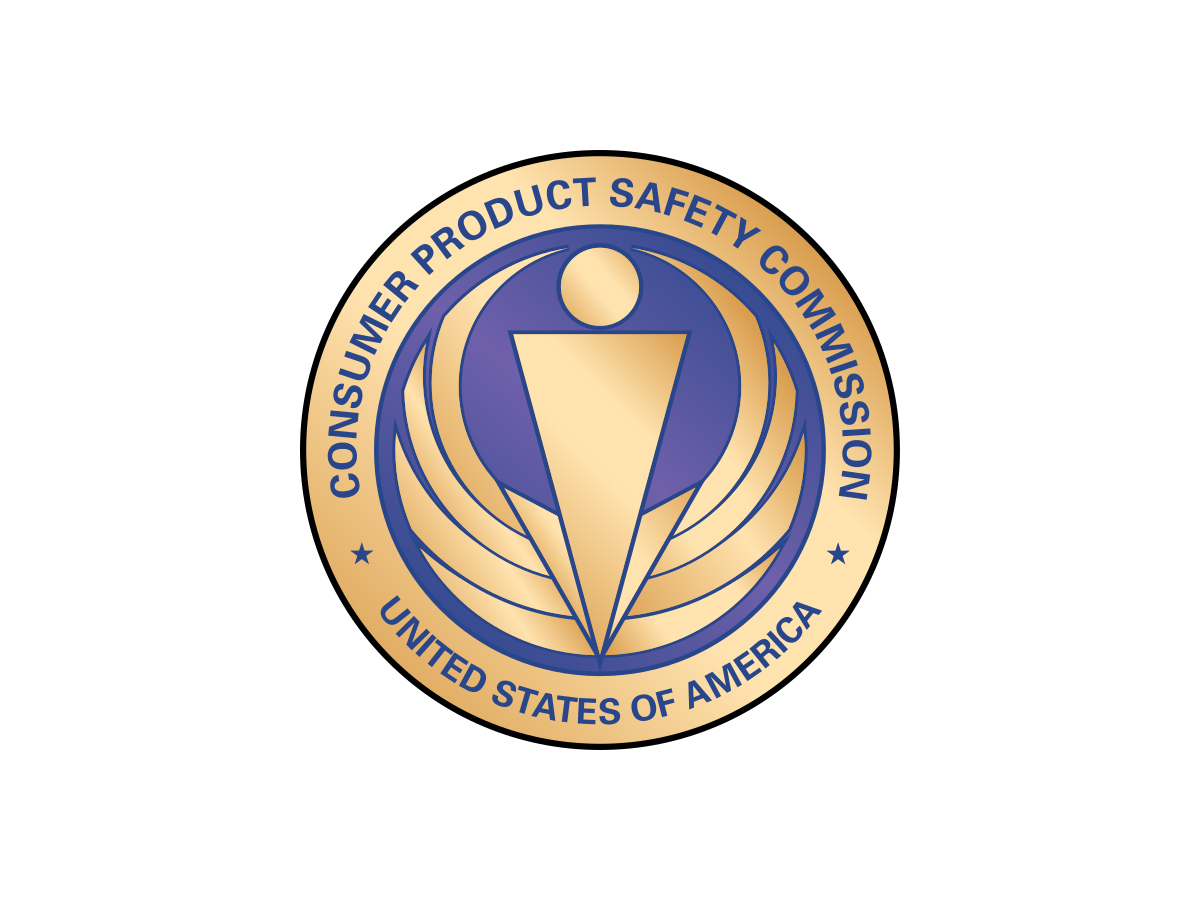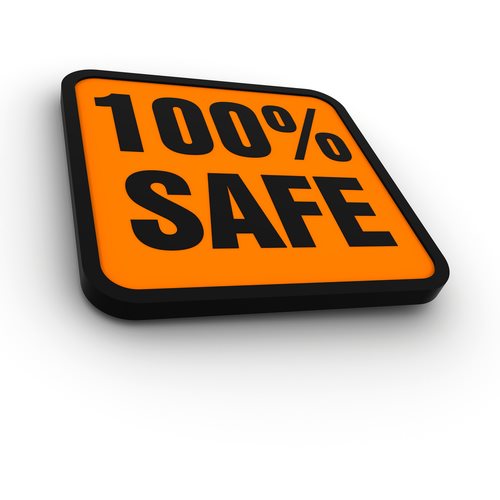Understanding The Consumer Product Safety Commission: A Comprehensive Guide
When it comes to product safety, the Consumer Product Safety Commission (CPSC) plays a crucial role in protecting consumers from hazardous products. Whether you're a business owner, consumer, or just curious about how product safety works, understanding the CPSC is essential. This comprehensive guide will walk you through everything you need to know about the CPSC, its mission, responsibilities, and how it impacts your daily life. So, buckle up and let's dive in!
Picture this: you're shopping for a toy for your little one, and you want to make sure it's safe. How do you know if the product you're buying won't harm your child? That's where the CPSC comes in. They're like the safety superheroes of the product world, ensuring that what you bring into your home doesn't turn into a disaster waiting to happen.
This guide isn't just about boring regulations and legal jargon. We're here to break it down for you in a way that makes sense. From recalls to safety standards, we'll cover it all so you can feel confident in the products you choose. Let's get started, shall we?
Read also:What Is In The Blue Salt Trick A Comprehensive Guide To Understanding Its Uses And Benefits
What is the Consumer Product Safety Commission?
The Consumer Product Safety Commission (CPSC) is an independent federal regulatory agency in the United States. Its primary job is to protect the public from unreasonable risks of injury or death associated with consumer products. Think of them as the gatekeepers of product safety, making sure that everything from cribs to power tools meets strict safety standards.
Established in 1972 by the Consumer Product Safety Act, the CPSC has been instrumental in reducing product-related injuries and deaths. They work tirelessly to ensure that manufacturers, retailers, and importers adhere to safety guidelines, and they're not afraid to step in when things go wrong.
Key Responsibilities of the CPSC
Let's talk about what the CPSC actually does. Here's a quick rundown:
- Setting safety standards for consumer products
- Conducting investigations into product hazards
- Issuing recalls for unsafe products
- Providing education and resources to consumers
- Working with international partners to ensure global safety standards
These responsibilities might sound simple, but trust me, they're a big deal. Every time you buy a product, the CPSC has likely been involved in some way to ensure it's safe for use. It's like having a safety net for your purchases.
How the CPSC Works: An Inside Look
Now that you know what the CPSC does, let's take a peek behind the scenes. The CPSC operates through a combination of regulations, enforcement, and education. Here's how it all comes together:
Regulations and Standards
The CPSC establishes and enforces safety standards for a wide range of products. These standards are based on scientific research, consumer reports, and industry practices. For example, they might set limits on the amount of lead allowed in children's toys or require specific warnings on flammable materials.
Read also:Rory Gilmore Actress A Comprehensive Dive Into Her Life Career And Legacy
These regulations aren't just random rules; they're designed to prevent injuries and save lives. The CPSC works closely with experts in various fields to ensure that their standards are up-to-date and effective.
Enforcement and Recalls
If a product is found to be unsafe, the CPSC can issue a recall. This means the product is removed from the market, and consumers are often offered a refund or replacement. Recalls can be voluntary, where the manufacturer takes the initiative, or mandatory, where the CPSC steps in to enforce the recall.
Recalls aren't just about fixing problems after they happen. They're also a way to raise awareness about potential hazards and prevent future incidents. The CPSC maintains a public database of recalls so consumers can stay informed.
Consumer Education and Outreach
One of the CPSC's most important roles is educating consumers about product safety. They provide resources, such as safety guides and videos, to help people make informed decisions. They also partner with organizations and communities to spread the word about safety practices.
This outreach is crucial because knowledge is power. The more consumers know about product safety, the better equipped they are to protect themselves and their families.
The Importance of the CPSC in Daily Life
You might be wondering why the CPSC matters in your everyday life. Well, here's the deal: almost everything you own or use has been touched by the CPSC in some way. From the mattress you sleep on to the coffee maker you use every morning, these products have been vetted for safety.
Preventing Injuries and Deaths
The CPSC's work has led to a significant reduction in product-related injuries and deaths. For example, the number of deaths from fires caused by faulty products has decreased dramatically thanks to CPSC regulations. This isn't just a statistic; it's a real-life impact that affects families across the country.
Protecting Vulnerable Populations
Children, the elderly, and people with disabilities are among the most vulnerable when it comes to product safety. The CPSC places a special emphasis on protecting these groups by setting stringent standards for products they use, such as cribs, walkers, and medical devices.
By focusing on these vulnerable populations, the CPSC ensures that everyone, regardless of age or ability, can live safely and securely.
CPSC Recalls: What You Need to Know
Recalls are one of the CPSC's most visible tools for ensuring product safety. But what exactly happens when a product is recalled? Let's break it down:
Why Products Get Recalled
Products can be recalled for a variety of reasons, including:
- Safety hazards, such as sharp edges or choking risks
- Defects that could cause injury or death
- Non-compliance with safety standards
- Potential fire or electrical hazards
These reasons might seem obvious, but they're critical to understanding why recalls are necessary. The CPSC doesn't take recalls lightly; they only issue them when there's a real risk to consumers.
How to Check for Recalls
Staying informed about recalls is easier than you might think. The CPSC maintains a website where you can search for recalls by product type, brand, or date. You can also sign up for email alerts to receive notifications about recalls that affect you.
Checking for recalls should be part of your regular routine, especially if you have children or elderly family members in your home. It's a small step that can make a big difference in your safety.
Consumer Rights and Responsibilities
As a consumer, you have rights and responsibilities when it comes to product safety. Here's what you need to know:
Your Rights
You have the right to:
- Safe products that meet CPSC standards
- Information about recalls and safety hazards
- Report unsafe products to the CPSC
These rights are designed to empower you as a consumer and give you the tools you need to make informed decisions.
Your Responsibilities
On the flip side, you also have responsibilities:
- Check for recalls regularly
- Follow safety instructions and warnings
- Report any incidents or hazards to the CPSC
By fulfilling these responsibilities, you're not only protecting yourself but also contributing to a safer community for everyone.
CPSC Resources for Consumers
The CPSC offers a wealth of resources to help consumers stay safe. Here are some of the most useful:
Safety Guides
Safety guides provide detailed information on how to use products safely. Whether you're buying a new appliance or setting up a playpen, these guides can help you avoid common pitfalls.
Recall Database
The CPSC's recall database is your go-to resource for staying informed about product recalls. You can search by product type, brand, or date to find the information you need.
Report Unsafe Products
If you encounter a product that you believe is unsafe, you can report it to the CPSC. They take these reports seriously and use them to investigate potential hazards.
These resources are just a few examples of how the CPSC supports consumers in their mission for safety.
The Future of Product Safety
As technology advances and new products enter the market, the CPSC continues to evolve to meet the challenges of the future. Here's what to expect:
Innovative Safety Standards
The CPSC is constantly updating its standards to reflect new technologies and materials. This ensures that even the most cutting-edge products are safe for consumers.
Global Collaboration
Product safety isn't just a national issue; it's a global one. The CPSC works with international partners to harmonize safety standards and address cross-border challenges.
By looking to the future, the CPSC is ensuring that product safety remains a top priority for generations to come.
Conclusion: Taking Action for Safety
In conclusion, understanding the Consumer Product Safety Commission (CPSC) is essential for anyone who cares about product safety. From setting standards to enforcing recalls, the CPSC plays a vital role in protecting consumers from harm.
So, what can you do to stay safe? First, educate yourself about product safety and the CPSC's role in it. Second, check for recalls regularly and report any unsafe products you encounter. Finally, share what you've learned with others to help spread awareness.
Remember, safety is a shared responsibility. By working together, we can create a world where every product is safe and reliable. So, take action today and make safety a priority in your life!
Table of Contents
- What is the Consumer Product Safety Commission?
- How the CPSC Works: An Inside Look
- The Importance of the CPSC in Daily Life
- CPSC Recalls: What You Need to Know
- Consumer Rights and Responsibilities
- CPSC Resources for Consumers
- The Future of Product Safety
- Conclusion: Taking Action for Safety


